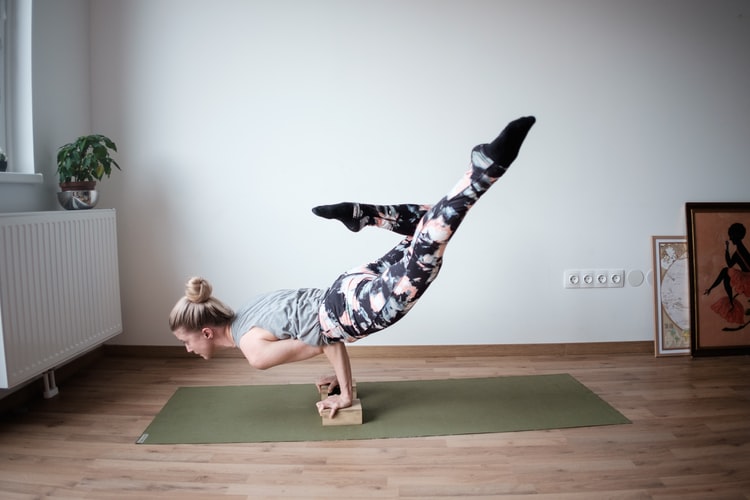
Home Workouts 101
I’m going to write this with a focus on resistance training versus pure cardio; as cardio can be done easily anywhere. Read my articles on Cardio (parts 1 and 2) for more.
I wrote this in March 2020, which as you know, was our big freeze in life. Most of us “non-essentials” were all stuck at home, and still are! Unbelievable! It looks like the remote way of living will be here to stay in some form or another, so it’s time you start to embrace exercising at home and learn some basics that will keep you both motivated and safe.
If you are anything like me, working at home means you are flat-out lazier and less motivated. Working in NYC’s hustle and bustle certainly kept me active; it’s the opposite of sitting around all day on your couch, dreading a workout in your living room. With that said, there are numerous ways to make the best of a bad situation!

Depending on where you were in your workout program when you had access to a gym and all of it’s awesome equipment, your goal when training at home should be, at minimum, to try to maintain certain attributes you achieved such as strength and Aerobic capacity, while increasing your work capacity in creative ways, which is something working out at home can achieve fairly easily with little or no equipment for the reasons I will discuss below. Further, I’ll show you how easily the goal of acquiring or maintaining your lean muscle mass is as well by manipulating a few things.
*Yes, you can do a full strength program with little equipment, but if you are reading this, you are likely looking to just get moving in a not-so-boring way instead of trying to achieve a triple-bodyweight deadlift or run a 40yard dash in 10 seconds.
Any workout program will rely on the classic “Overload Progression” principle to make any progress. This just means having your body adapt to the stress you put it through, be it becoming stronger, bigger, faster, more Aerobically efficient, etc. It’s why you work out, and why if you do the same thing over and over, it stops working. This is the exact reason why you get stronger week to week when on a strength program, or able to run farther than you did the previous week if on a running program. Regardless of WHAT exercises you choose, without using this basic principle, no improvements happen, period.
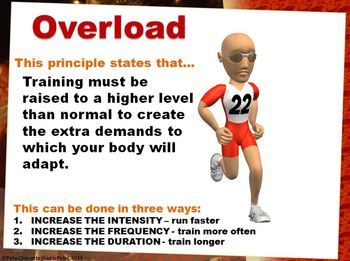
In terms of achieving this “Overload”, the obvious downfall for working out at home is lack of equipment (and motivation!). This means resistance training can be tricky in terms of creating mechanical tension; our ability to manipulate mechanical tension (load) becomes severely limited, to say the least, unless you understand a few basic principles, which you will in about 5 minutes!
In case you didn’t know, mechanical tension is kind of a big deal when it comes to getting strong and swole…think of it as something heavy that applies stress and stretch to a muscle. Dumbbells and Barbells do this easily with their heavy loads—the heavier they are, the more tension they will create; but not having access to these and relying on either bodyweight, or like most people, some light weights or tools you have lying around at home, can be tricky!
With that said, we can indeed rely on some other variables, namely, using varying leverages, stability manipulation, and tempos to manipulate mechanical tension, as well enhancing something called metabolic stress (the burn you feel in your muscles with high reps—metabolite accumulation if you want to be a fancy-pants) at the same time. Both mechanical tension and metabolic stress are key features in building lean muscle mass. Using them along with the Overload Progression principle is your recipe for resistance training to gain lean muscle mass.
Further, if your goal is to just keep in shape and increase your work capacity via general resistance training and Aerobic conditioning, such as what goes on in most Bootcamps, things like creative rep-schemes and varied programming will take care of that as well!
Let’s take a deeper look into all of these so they make sense.
Manipulating Leverage
As stated earlier, you can make an exercise harder by manipulating your leverage. A good example is a push up. Here are just a couple ways to make a push up harder, doing nothing more than manipulating your leverage:
Example: Knee Push Up>Regular Push Up>Decline Push Up
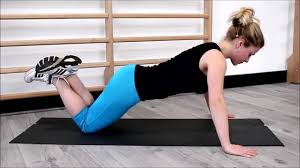
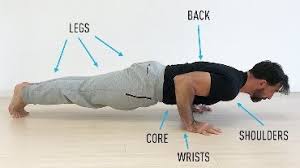
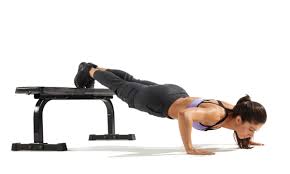
So if doing regular push ups is becoming too boring, and it’s taking you dozens of reps to achieve mechanical tension, simply put your feet up! This is akin to using a heavier set of dumbbells in the gym. Most know this, but what’s cool is you can do this for ANY exercise. Take your classic split squat…..Check this progression out, which uses leverage and decreased stability to enhance the SAME movement, a split squat:
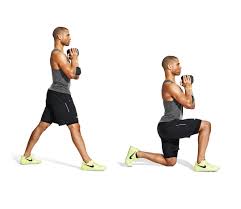
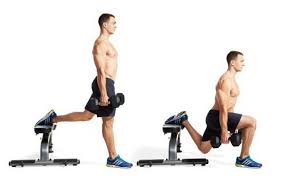
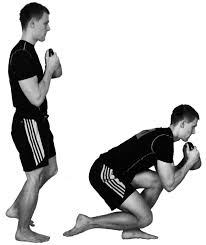
You are nice and stable in the first picture, then we take away stability and change your leverage in the second picture, while finally taking away nearly ALL stability in the 3rd picture. Same exercise, but different.
Manipulating Metabolic Stress
Here is an example where we can make the same exercise harder by manipulating leverage as shown above, but also manipulating metabolic stress to aid in acquiring lean muscle mass, which mechanical tension will only do if taken to that burning failure over time, what people call “Time Under Tension”. Win-Win!
*Btw, mechanical tension alone doesn’t produce lean muscle mass unless you add in metabolic stress. Think about it: you will get TONS of mechanical tension lifting something heavy off the ground for 1 rep. Tons! But there was no “Time Under Tension” to produce the metabolic stress.
Taking the push up example you can perform a technique called mechanical drop sets. Think reversing the previous pictures above:
Decline Push Up>Regular Push Up>Knee Push-Ups without stopping. That will burn, which is the metabolic stress I mentioned, and illicit an anabolic adaptation (your muscles get more jacked). By “lowering the weight” by manipulating your leverage, you create more Time Under Tension and Metabolic Stress because your kept the set going longer and made it burn! See how that works?
Here is that in action:
Again, you can do the above with any movement! For the split squat, like the push up, just reverse the pictures. Do as many of the 3rd picture as you can, then place your foot up, giving you more stability so you can continue to work, and when you can’t do any more of those, give yourself even more stability and leverage by finishing with the first picture…all in the same space in your house!
Manipulating Programming via Creativity
Another thing we will rely on at home is creativity in terms of how we are organizing and structuring our workouts. You can’t keep doing the same thing over and over and over..Why?
- You will get bored.
- You will need to constantly increase the Overload, which overtime could get you in trouble due to excessive inflammation.
- There are other fitness attributes you should spend some time on as well, like your cardio! Strength and Cardio, for example, should piggy back and complement each other. In essence, the stronger you get, the more OPTIONS you will have Aerobically. That is a topic for another day, and I need to stop this rant right now before I write another 1,000 words!
Like most of you, I DREAD working out in a small room like my den…it just stinks all around, literally ( i have 4 boys, 3 cats, and myself…).
We can, however, manipulate what we are doing in that small space to make it more palatable and interesting, besides the obvious addition of cool Youtubes or good tunes. For example, Timed Sets such as Every Minute on the Minute would achieve this, be it for conditioning or resistance training. Here is an example of how we can use “EMOM” to achieve metabolic and mechanical stress using the push up:
EMOM Push-Ups: performing repeated bouts at the minute mark, each minute
Week 1: 3 push-ups for 8 minutes (24 total push-ups)
Week 2: 4 push-ups for 9 minutes (36 push-ups)
Week 3: 5 push-ups for 10 minutes (50 push-ups)
(notice the Overload Progression from week to week, wink wink)
Here is another example using some pretty basic household items, such as paper plates, garage tools, and whatever outside space you have access to, using Timed Sets. This just means doing work as-written for the prescribed time, and adding overload by increasing time (or making the exercise harder using load and leverage, of course)
Btw, here is a leg curl using paper plates, which i bet you didn’t realize was a tool:
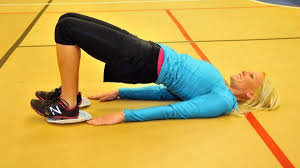
- 30 seconds paper plate leg curls
- 30 seconds push-ups
- 30 seconds squats
- 30 seconds soup can pullovers
- 30 seconds toolbox Farmer’s carry: 25 yards
- Run around the block or do 1 minute Run in Place (underrated exercise!)
- Repeat for 20 minutes using the same time parameters.
This use of Timed Sets would be a workout designed to increase your work capacity and conditioning using some fundamental patterns (push, pull, hinge, squat, carry, lunge). You could simply add 10 seconds each week for a few weeks to overload and progress the workout.
So you used Time Sets for 2 completely different goals. One was to get more jacked, the other was a circuit to challenge your conditioning. Cool heh?
*As an aside, the terms conditioning and work capacity get thrown around a lot, but they are one and the same…When you hear “work capacity”, think varied programming which rarely looks the same, which will do things like enhance athleticism due to the variety, maintain lean muscles mass, and definitely increase caloric expenditure, because you are never actually getting efficient at one thing from workout to workout, which is the opposite of strength and bodybuilding where you are using similar exercises week to week, albeit small manipulations here and there.
(Think about it: if you are good at something, you won’t burn as many calories doing it! Think Michael Phelps or Ryan Lochte burn a lot of calories swimming? I bet you $1 they would burn more trying to run…).

Gotta give you one more, because I can’t help myself! Here is another workout you could use, using the same exercises, but with the EMOM template, which will in this example increase metabolic stress, where we are changing focus to developing muscle mass and getting that “burn” that all the dudes like, versus getting our Aerobic-sweat on. Similar to the EMOM for push ups, but using it as a complete resistance training work out that could be done in your den!
EMOM for 5 minutes EACH of:
- 10 paper plate leg curls (do all 5 sets here before moving on)
- 10 push-ups (do all 5 sets here before moving on)
- 10 squats using toolbox as load (do all 5 sets here before moving on)
- 10 lat-pullovers using soup cans or toolbox in a hollow body position (do all 5 sets here before moving on)
- 10 Reverse Crunches
- Total time: 25 minutes + rest in between exercises. 50 reps each. You could progress this in a number of ways, using the overload progression principle (add reps to each set, add time, etc.)
So using time sets and creative rep schemes different ways is your new thing…..give it a whirl….thousands of possibilities.
The MAGIC Rep
I’d be remiss to not mention a REALLY COOL way to achieve all these things, by just changing HOW you perform your reps.
Home Workout’s New Friend: The “Eccentric Isometric” Rep.
This basically means lowering the load (your bodyweight or external load) very slowly and using a pause at the end. This turns on some powerful signaling pathways via occlusion because your longer repetition blocks blood inflow and outflow, thus limiting/delaying Oxygen and nutrients and removal of metabolic byproducts—that metabolic stress again! . You will also tap into your lower threshold motor units, which you might not have done in years! Win Win again!
The other benefit of Eccentric Isometrics is that you will clean your technique up, because the somatosensory feedback (“feel” of the exercise) you will get from your muscle spindles (which are the “feelies” your brain uses in weight lifting) is way more pronounced—you are spending more time/seconds in those positions, so of course you can feel it more! If you have bad technique, this will look and feel totally obvious in that paused position. It really is a “magic” rep, and I use it 90% of the time for both safety and resistance reasons.
Here is an example of this type of Rep in action:
Let’s see you bang out 20 push ups this way, tough guy….
Wrapping It Up
So there ya have it–some new ways to get that weight-lifting feel without having to rely on weights. Regardless of the methods you choose to use, ensure you are following the A,B,C’s of Exercise Selection! In fact, go and read my article on that here, right on my page at https://www.trainerize.me/profile/brianmahoney/Brian.Mahoney.
*If you are interested in training on-line or Virtually with me, click the link to set up your complimentary assessment. We can begin when you’re ready. You will empower yourself to learn how to work out at home. If anything, you can use this new knowledge anytime down the road! When you take that surprise day off in the summer, you will have an alternative to paying for a day pass at the gym, b/c you know how to use bodyweight leverage, various tempos, and household items as your “gym”



